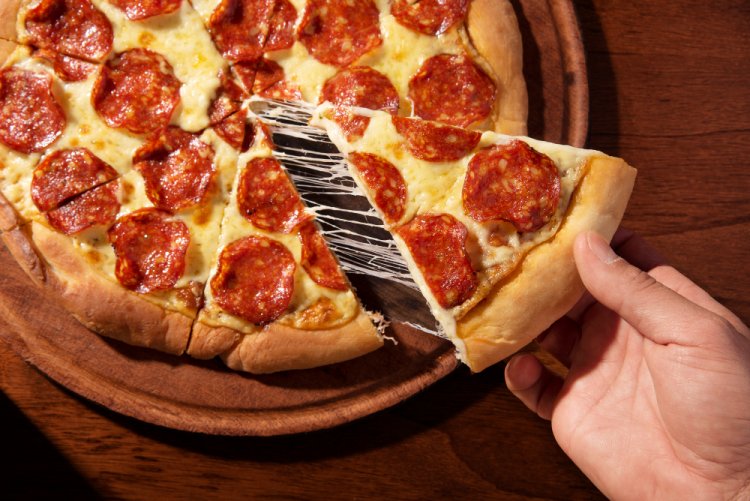Exploring the Evolution of American Pizza and its Differences from Italian Pizza
In the realm of culinary delights, few dishes have gained as much worldwide acclaim and adaptation as pizza. Originating from Italy, pizza has undergone significant transformations, particularly in the United States, where it has become a staple of American cuisine. In this article, we delve into the evolution of American pizza and compare it to its Italian counterpart, highlighting the key differences that make each unique.

Origins and Traditional Styles
Italian pizza, known for its thin crust, minimal toppings, and emphasis on quality ingredients, has a rich history dating back to Naples in the 18th century. Traditional Italian pizzas include Margherita (tomato sauce, mozzarella, and basil), Marinara (tomato sauce, garlic, oregano, and olive oil), and Neapolitan (similar to Margherita but adhering to specific standards).
In contrast, American pizza has a more recent history, with its roots tracing back to Italian immigrants who brought their culinary traditions to the United States. The first documented pizzeria in America, Lombardi's, opened in New York City in 1905, marking the beginning of American pizza's journey.
Key Differences in Ingredients and Preparation
-
Crust Thickness: Italian pizza typically features a thin, crispy crust that is baked in a wood-fired oven at high temperatures for a short period. On the other hand, American pizza offers a range of crust options, including thin crust, hand-tossed, pan, and deep-dish styles, catering to diverse preferences.
-
Toppings: Italian pizzas focus on simplicity and balance, with limited toppings such as fresh tomatoes, mozzarella cheese, basil, olive oil, and occasionally cured meats like prosciutto or pepperoni. American pizzas, influenced by local tastes and culinary creativity, often boast generous toppings like pepperoni, sausage, mushrooms, onions, peppers, and a variety of cheeses.
-
Sauce: Italian pizzas typically use a minimal amount of tomato sauce, allowing the flavors of the other ingredients to shine. American pizzas may feature a thicker layer of tomato sauce, sometimes with added herbs and spices for a bolder flavor profile.
-
Cheese: While mozzarella is a staple on both Italian and American pizzas, the type and amount of cheese can vary significantly. Italian pizzas may use fresh mozzarella or buffalo mozzarella, while American pizzas often include shredded mozzarella along with other cheeses like cheddar, provolone, or Parmesan.
Evolution and Popularity of American Pizza
The evolution of American pizza can be attributed to several factors:
-
Regional Variations: Different regions in the United States have developed their own pizza styles, such as New York-style thin crust, Chicago deep-dish pizza, Detroit-style square pizza, and California-style pizza with unconventional toppings like barbecue chicken or avocado.
-
Innovative Toppings: American pizza chefs have pushed the boundaries of traditional toppings, introducing unique combinations like Hawaiian pizza (ham and pineapple), BBQ chicken pizza, veggie-loaded pizzas, and gourmet options featuring arugula, truffle oil, or figs.
-
Fast Food Chains: The rise of fast-food pizza chains in the mid-20th century, such as Pizza Hut, Domino's, and Papa John's, played a significant role in popularizing pizza across America and internationally.
-
Cultural Fusion: American pizza reflects the cultural diversity of the country, incorporating influences from Italian, Greek, Mexican, and other cuisines, leading to fusion creations like taco pizza or buffalo chicken pizza.
In conclusion, while Italian pizza maintains its traditional charm and authenticity, American pizza has evolved into a dynamic and diverse culinary phenomenon. The differences in crust, toppings, sauce, and cheese contribute to distinct dining experiences for pizza lovers worldwide. Whether you prefer a classic Margherita from Naples or a loaded deep-dish pizza from Chicago, the world of pizza offers something for every palate, showcasing the enduring appeal of this beloved dish across borders and cultures.
What's Your Reaction?





















